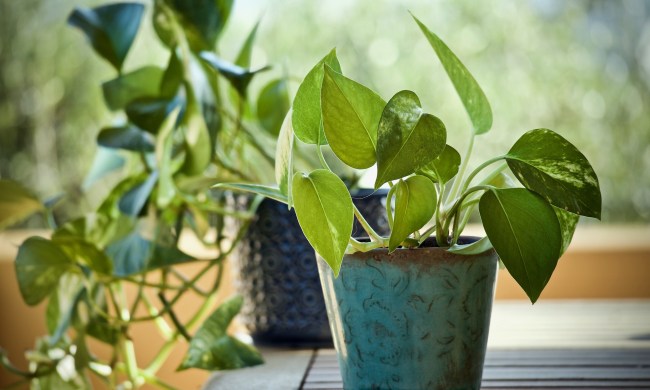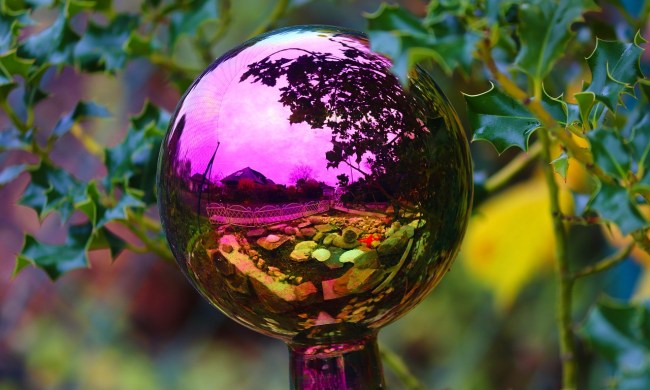For the most part, caring for plants is pretty much the same. They need light, water, and food, and most of them will be perfectly happy in the already existing conditions of your home. However, a vast section of plant species tends not to be so easy to care for, but their beautiful foliage is hard to resist! Of course, we’re talking about calatheas. These striped, spotted, and elegant plants are heavily desired in the houseplant community, but they are also well known for their fussiness. While you might be able to ignore a ZZ plant for three months and it will be fine, a calathea will require a whole lot more attention and care. So before you go spending a lot of money on a rattlesnake plant, let’s go over what this plant needs.
 What is the rattlesnake plant?
What is the rattlesnake plant?
The rattlesnake plant, or Calathea lancifolia, is a beautiful plant native to the rainforests of Brazil. It gets its common name from the markings on its leaves, which resemble the markings on a rattlesnake’s tail. The leaves are light green with darker green stripes and an eye-catching purple underside. In ideal conditions, they can grow up to 30 inches tall!
In their natural habitat, the rattlesnake plant grows small yellow flowers but very rarely grows those indoors.
 Care tips for a rattlesnake plant
Care tips for a rattlesnake plant
These are not beginner-friendly plants; they have high expectations from their caretakers and need specific heat, light, and humidity levels that can be hard to accommodate. And while other plants will give you warnings that they’re unhappy and give you time to adjust and help them out, the rattlesnake plant will simply drop all its leaves. This can happen overnight without you even knowing something is wrong.
Water
It doesn’t want to sit in water, but it likes its soil to stay moist. Do not let this plant dry out for long periods, or else it will drop leaves at an alarming rate. You can help yourself out by adding peat moss to its soil for added moisture retention.
Light
The rattlesnake plant grows in the under-canopy of the rainforest, so it prefers filtered and dappled lighting. This means it will be happiest about six feet from a bright window, but not on its windowsill. However, if you don’t have another spot, a window could work as long as you put drapes or something sheer between the sunlight and the plant.
Food
During the spring and summer, the rattlesnake plant will benefit from monthly feedings with a balanced fertilizer. Or you can use a fertilizer designed for foliage-heavy plants to help boost the plant’s leaf production and keep their existing leaves happy and healthy.
Temperature
Since it’s used to those rainforest conditions, the rattlesnake plant will want to stay between 65 and 70 degrees Fahrenheit. Anything lower than this for long periods will cause the plant to curl its leaves and likely die off. In addition to warm temperatures, the rattlesnake plant will need to avoid vents, dry air, cold air, lack of ventilation, and sudden changes in temperatures. These are all dangerous to the life of a rattlesnake plant.
Humidity
While you’re keeping the space warm for this stripped calathea, you’ll also want to keep the humidity high. Anything below 55 or even 60 percent humidity can cause this plant to start browning at the tips and dying. You can combat this by grouping it with other high humidity plants, placing the plant next to a humidifier, regularly misting the plant, or bringing it into the shower with you every day. If you have bright indirect light in a bathroom that’s frequently used, that might be ideal for this rainforest baby.
Toxicity
Even though this plant is high maintenance, it is not toxic to humans, cats, or dogs. So you can safely place this plant within reach of kids or pets and not worry about them taking a bite. However, after all the hoops you’ve jumped through to get this plant happy, you might not be so pleased about your cats’ nibbling.
Additional care
You might notice your rattlesnake plant move a lot throughout 24 hours. This is because the plant is following the sun and looking for the optimal light advantage. To avoid the plant growing in odd directions, it’s important to rotate it regularly.
If you’re willing to put in the work, or if you already have a lovely “rainforest corner” in your home, the rattlesnake plant will not disappoint with its stunning leaves.
 What is the rattlesnake plant?
What is the rattlesnake plant? Care tips for a rattlesnake plant
Care tips for a rattlesnake plant

